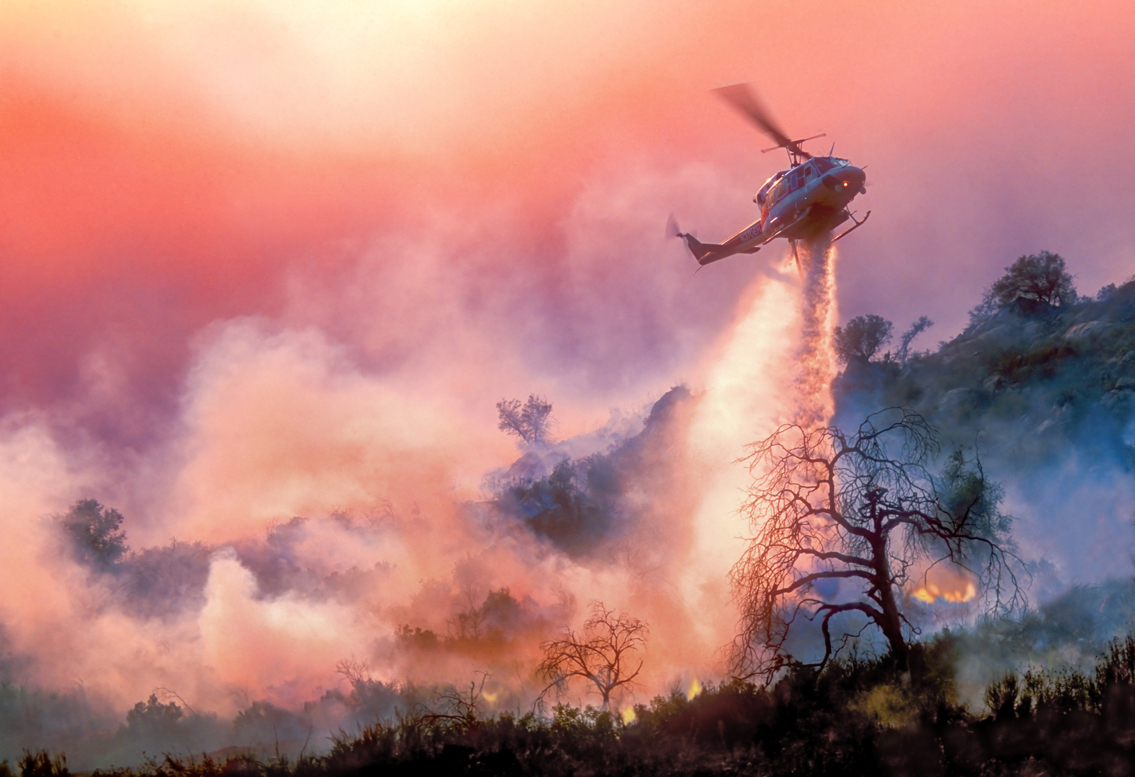Nikki Skuce received the news she had been dreading on a Friday night in early July from a neighbor: her little village of Smithers, British Columbia, was on evacuation notice due to an advancing fire that was barely 4 km (2.4 miles) away.
The director of a non-profit at age 51 says, “My daughter quickly took action and packed a to-go bag and the rest of us followed suit.” Then, despite our efforts, I stayed awake much of the night.
She worked tirelessly the following day to get proper information as neighbors inquired about the family’s wellbeing.
Ms. Skuce and her family ultimately didn’t need to leave their home, but the noxious smoke from the wildfire hurt her lungs so much that they were forced to stay inside with the windows tightly closed.
The British Columbia home of Nikki Skuce was dangerously near to wildfires.
One of the Canadian provinces dealing with a terrifying season of blazing wildfires is British Columbia.
The week of July 17 saw about 900 forest fires raging in Canada, consuming 10 million hectares and making this year’s fire season the worst on record. The first half of 2023 saw higher carbon dioxide emissions from those wildfires than any other complete year on record.

Investment in technology that could assist in identifying wildfires before they become major has been stimulated by this loss.
OroraTech, a German company with a branch in Vancouver, currently has two low-earth orbiting satellites equipped with specialized infrared sensors that measure temperatures in grids of four by four meters. By the end of the year, they hope to have eight satellites in orbit.
Their system can swiftly identify temperature anomalies and relay them to clients, which include forestry and firefighting services, when combined with data from other satellites.
The technology is also capable of data analysis and fire development forecasting.
According to Thomas Grübler, CEO of OroraTech, “Our software can tell you which fire out of the many on the ground will grow faster than others.”

Their system ought to be able to scan the world 48 times each day by 2026.
According to chief executive Josh Mendelsohn, another business, New York-based Cornea, uses AI to integrate topographical and geographic data into its maps that can show potential fire behavior.
“We want to optimize how we give those forest management personnel a clearer ability to communicate to communities what the risks of wildfires are,” he says.
Every fire in a huge wildfire outbreak can’t always be put out. Therefore, Cornea’s mapping method also suggests locations where fighting a fire will be more likely to succeed.
The Toronto- and Brazil-based SensaioTech company has created a smartphone-sized gadget that can measure 14 distinct forest floor conditions, such as salt, humidity, and soil temperature.

These readings, which are taken every minute, are then sent to a dashboard so that clients may evaluate them. They can also send out alerts to mobile devices when the variables are dangerously high.
According to CEO Joo Lopes, “the best satellite data is 30 minutes old, but our sensors provide real-time data of what’s happening within a forest floor.”
Additionally, drones are being improved to aid firemen. Scientists from Imperial College London and the Empa research center in Switzerland created the FireDrone, an experimental drone that can endure temperatures of up to 200C for ten minutes at a time.
The Firedrone can withstand temperatures as high as 200C.
The idea behind this drone, which is more often used to fight fires than to detect them, is that it can automatically fly into burning buildings and tell firefighters of things like the distribution of fire sources and the whereabouts of people who are trapped within.

According to Michael Flannigan, BC Research Chair for Predictive Services, Emergency Management, and Fire Science at Thompson Rivers University, despite all the advancements in technology, predicting which forests will be the scene of the next fire is still a guessing game.
The principal source of wildfires, lightning, which Mr. Flanigan claims has caused four times more flames in the Western US since the 1970s, cannot always be detected by sensors, which can only detect dry soil and high temperatures.
Furthermore, as the planet is getting warmer, Prof. Flannigan continues, “climate change is a factor we can’t ignore.
But he cites one rather modest instrument as the most important recent technological advance in the detection of wildfires.
According to Prof. Flannigan, more fire organizations are releasing their own applications to make it simpler for the public to find fires and warn fire management using smartphones.
Download The Radiant App To Start Watching!
Web: Watch Now
LGTV™: Download
ROKU™: Download
XBox™: Download
Samsung TV™: Download
Amazon Fire TV™: Download
Android TV™: Download

